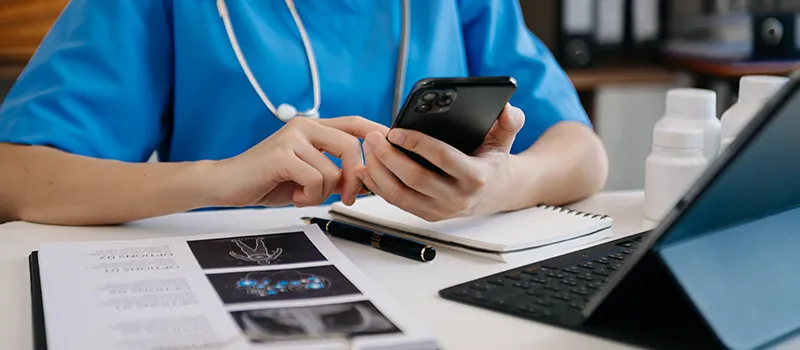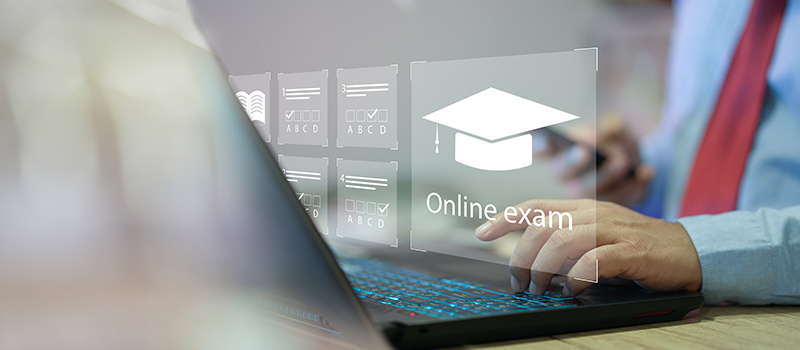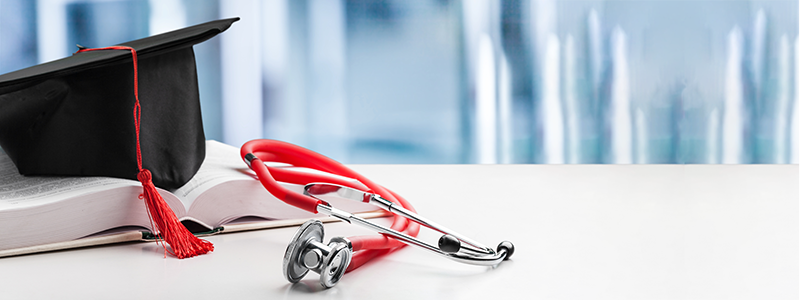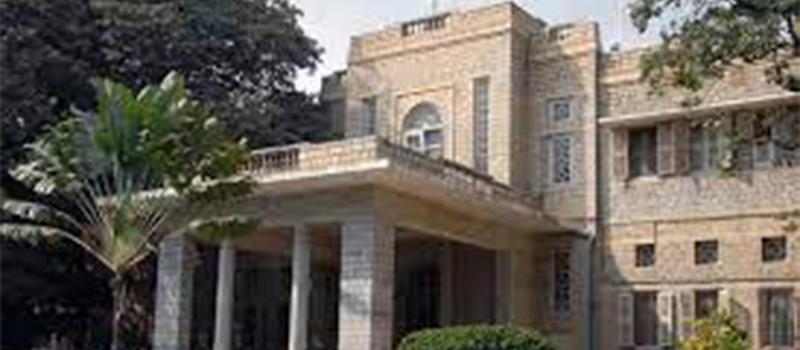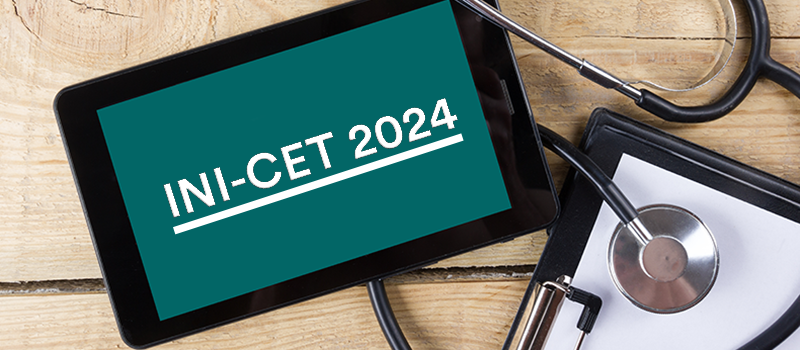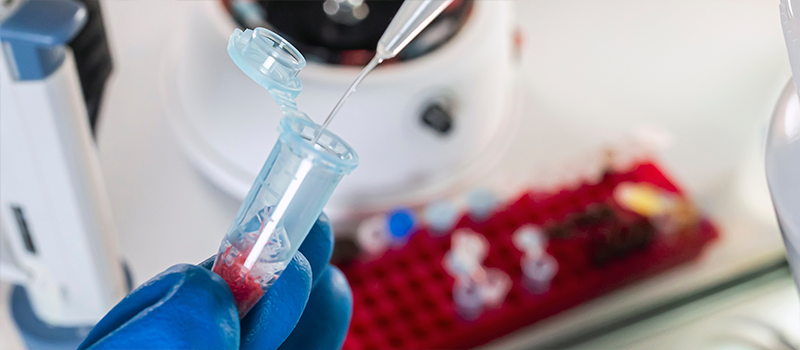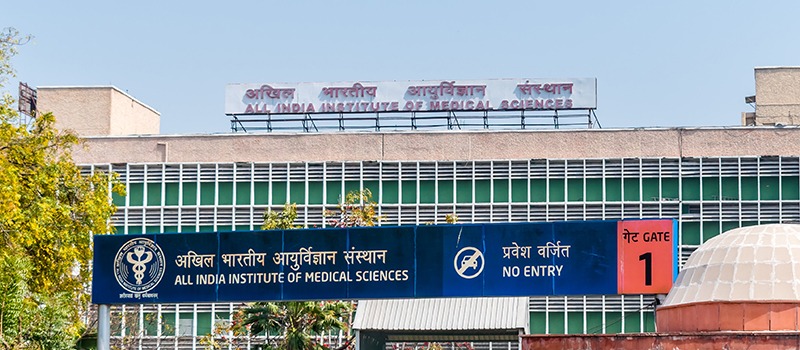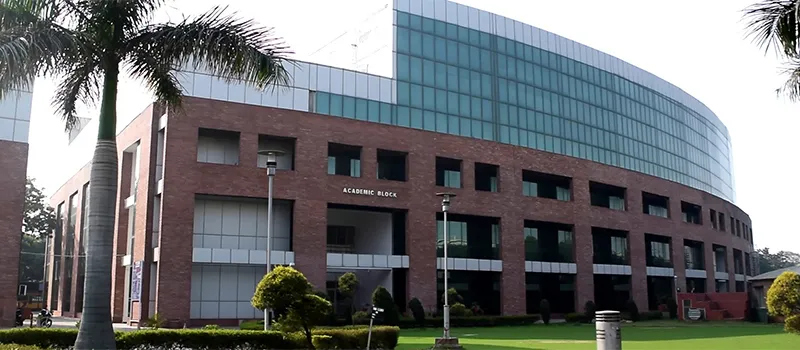

Fellowship Entrance Test (FET): Eligibility, Courses, Fee Structure & Stipend
Fellowship Entrance Test (FET) is a single-window entrance examination for admission to various fellowship (FNB) courses. It is a qualifying cum ranking examination. The FET exam is conducted by the National Board of Examinations in Medical Sciences (NBEMS). The main goals of NBEMS are to administer high-quality exams across India and raise the bar for postgraduate medical education in modern medicine.
Eligibility Criteria
The eligibility criteria for appearing in the FET entrance examination are different for Indian and International students.
Eligibility Criteria for Indian Students:
You must fulfill the following criteria in order to be eligible for FET courses:
- You must have a recognized PG medical degree/Provisional pass certificate (MD/MS/DM/MCh/ DNB/DrNB) or an equivalent recognized qualification.
- You must have completed the eligible feeder qualification for the particular fellowship course you want to pursue.
- The deadline for meeting the requirements for the MD, MS, DM, MCh, DNB, and DrNB degree in order to be considered eligible to appear in the FET exam is December 31, of the academic year.
- Registration with the NMC or State Medical Council is required, and written documentation of that registration must be shown at the testing location on the exam day.
- No age restriction applies to students enrolled in NBEMS Fellowship courses.
Eligibility Criteria for International Students:
As an International student/Foreign National, you must fulfill the following criteria:
- You must possess a PG medical qualification equivalent to the eligible feeder qualification for the fellowship course you want to pursue.
- The deadline for meeting the requirements for the eligible feeder PG medical degree in order to be considered eligible to appear in the FET exam is December 31, of the academic year.
- You must be a registered medical practitioner and your qualification must be registered in your country as well as recognized as per the NMC Act, 2019.
- You as a Foreign National must get the security clearance from the Ministry of Home Affairs, Govt. of India for appearing in FET.
- You are granted a temporary registration for the duration of your course and thereby a visa support letter is issued by NBEMS to facilitate a valid travel visa and travel medical insurance.
- You are required to obtain a ‘No Objection Certificate’ from your Medical Council/Government to appear for the exam and work in India for the period of Fellowship. After obtaining the NOC, you are entitled to get your valid travel documents including visa and passport.
- You must keep all your documents safe to produce them at the time of counselling.
- There is no age restriction for applying to the fellowship courses.
List of NBEMS Fellowship Courses offered through FET Entrance Examination
List of FNB Courses along with Eligibility Feeder Qualification (For Indian Students)
| S. No. | Name of Fellowship Course | Prior Eligibility Qualification |
| 1 | Arthroplasty | DNB/MS (Orthopaedics)
|
| 2 | Bariatric Surgery | MS/DNB General Surgery
(At least three years of experience in General Surgery/ Minimal Access Surgery after post-graduation is required)
|
| 3 | Breast Imaging | MD/DNB Radiodiagnosis
|
| 4 | Cardiac Electrophysiology | DM/DNB/DrNB Cardiology
|
| 5 | Fetal Radiology | MD/DNB Radiodiagnosis
|
| 6 | Head and Neck Oncology | MS/DNB General Surgery
MD/DNB Otorhinolaryngology MCh/DNB/DrNB Surgical Oncology MCh Head and Neck Oncology
|
| 7 | Hand & Micro Surgery | DrNB/MCh Plastic and Reconstructive Surgery
DNB/MS Orthopaedics DNB/MS General Surgery
|
| 8 | Infectious Disease | DNB/MD General Medicine
MD Tropical Medicine
|
| 9 | Interventional Cardiology | DrNB/DM (Cardiology)
|
| 10 | Liver Transplantation | DrNB/MCh (GI Surgery)
|
| 11 | Maternal & Foetal Medicine | DNB/MD/MS Obstetrics & Gynaecology
|
| 12 | Minimal Access Surgery | DNB/MS General Surgery
|
| 13 | Minimal Access Urology | MCh/DNB/DrNB Urology
|
| 14 | Pediatric Gastroenterology | DNB/MD Pediatrics
|
| 15 | Neurovascular Intervention | DrNB/MCh Neurosurgery
DrNB/DM Neurology DM Neuroradiology DNB/MD Radiodiagnosis
|
| 16 | Onco-Anaesthesia | DNB/MD Anaesthesia
|
| 17 | Pain Medicine | DNB/MD Anaesthesia
|
| 18 | Pediatric Anaesthesia | DNB/MD Anaesthesia
|
| 19 | Pediatric Hemato-Oncology | DNB/MD Pediatrics
|
| 20 | Pediatric Nephrology | DNB/MD Pediatrics
|
| 21 | Pediatric Urology | MCh/DNB/DrNB Urology
MCh/DNB/DrNB Pediatric Surgery
|
| 22 | Renal Transplant* | MCh/DNB/DrNB Urology
MS/DNB General Surgery with three years of experience in a renal transplant centre (Only Renal Transplant Specialty Board Certified Centres are approved for this experience)
|
| 23 | Reproductive Medicine | DNB/MD/MS Obstetrics & Gynaecology
|
| 24 | Spine Surgery | DNB/MS Orthopaedics
DrNB/MCh Neurosurgery
|
| 25 | Sports Medicine | DNB/MS (Orthopaedics)
|
| 26 | Transplant Anaesthesia | DNB/MD Anaesthesia
|
| 27 | Trauma Anaesthesia & Critical Care | DNB/MD Anaesthesia |
| 28 | Trauma & Acute Care Surgery | DNB/MS (General Surgery)
DNB/MS (Orthopaedics) DrNB/MCh (Neurosurgery) DNB/MD (Anaesthesiology)
|
| 29 | Vitreo Retinal Surgery | DNB/MS (Ophthalmology)
|
List of FNB Courses along with Eligibility Feeder Qualification (For International Students)
| S. No. | Name of Fellowship Course | Prior Eligibility Qualifications |
| 1 | Arthroplasty | DNB/MS (Orthopaedics)
|
| 2 | Hand & Micro Surgery | DrNB/MCh Plastic and Reconstructive Surgery DNB/MS Orthopaedics
DNB/MS General Surgery
|
| 3 | Interventional Cardiology | DrNB/DM (Cardiology)
|
| 4 | Maternal & Foetal Medicine | DNB/MD/MS Obstetrics & Gynaecology
|
| 5 | Minimal Access Surgery | DNB/MS General Surgery
|
| 6 | Neurovascular Intervention | DrNB/MCh Neuro Surgery
DrNB/DM Neurology DM Neuroradiology MD/DNB Radiodiagnosis
|
| 7 | Paediatric Hemato-Oncology | DNB/MD Pediatrics
|
| 8 | Reproductive Medicine | DNB/MD/MS Obstetrics & Gynaecology
|
| 9 | Spine Surgery | DNB/MS (Orthopaedics)
DrNB/MCh (Neuro Surgery)
|
| 10 | Trauma & Acute Care Surgery | DNB/MS (General Surgery)
DNB/MS (Orthopaedics) DrNB/MCh (Neuro Surgery) DNB/MD (Anaesthesiology)
|
| 11 | Vitreo Retinal Surgery | DNB/MS (Ophthalmology)
|
FET Exam Scheme
| Particular | Description |
| Type of Questions | Objective type questions |
| Total Duration of the Exam | 105 minutes (Part A – 45 minutes and Part B – 60 minutes) |
| Total Number of Questions | 100 (divided into two parts; Part A and Part B) |
| Marking Scheme | +4 is given for every correct answer and -1 is deducted for every incorrect answer |
FET Question Paper/Exam Pattern
- The FET question paper will have two parts: Part A and Part B in which Part A has 40% weightage and Part B has 60% weightage.
- A separate question paper will be there for each fellowship course/clubbed group.
- In Part A, questions from the eligible feeder specialty/specialties from the particular fellowship course will be asked.
- In Part 2, questions from the concerned fellowship or group of clubbed fellowship courses will be asked.
List of Fellowship Courses which have been clubbed together are mentioned below:
| S. No. | Fellowship Courses have been clubbed together |
| 1 | a. Pediatric Hemato-Oncology
b. Pediatric Gastroenterology c. Pediatric Nephrology |
| 2 | a. Reproductive Medicine
b. Maternal and Foetal Medicine |
| 3 | a. Spine Surgery
b. Sports Medicine c. Arthroplasty |
| 4 | a. Paediatric Anaesthesia
b. Onco-anesthesia c. Transplant Anaesthesia d. Trauma Anaesthesia & Critical Care e. Pain Medicine |
| 5 | a. Interventional Cardiology
b. Cardiac Electrophysiology |
| 6 | a. Minimal Access Surgery
b. Bariatric Surgery |
FET Examination Fee
- FET Examination Fee for Indian Students: Rs. 4250
- FET Examination Fee for International Students: 44250 (Examination Fee of Rs. 37500 + 18% GST)
The payment gateway charges are extra for both Indian and International students. Please make sure that the payment for the examination fee has been received as indicated by the letter “S” (for successful) in the application form’s payment status field. Until the payment status is indicated as “s” on the application form, the application submission procedure is not complete.
FET Application Form
The following are the steps to fill FET application form online:
- Fill out the user registration form to create a password and a user ID/application ID.
- Email and SMS will be used to send the User ID and Password.
- Fill out the application form completely, and submit your photo, scanned signature, thumbprint, and other documents.
- Select your test city and pay the exam fee.
- Accept the declaration and submit the application.
- Print off the completed application form with the Transaction ID and “S” (Successful) payment status for your records.
Instructions for Uploading the Image
You must have the scanned images of the photograph, thumb impression, and signature ready as per the specifications while applying for the FET application form.
A. Photograph: You are required to upload two photographs; one is a real-time photograph and the other is a recent photograph.
1. Real-time photograph: It is taken by the in-built camera or webcam of the system while filling out the application form. The following things should be taken care of while taking real-time photographs:
- You must be dressed in formal attire sitting or standing against a white background.
- You should be visible in the image with a full face, ears, neck, and shoulder, and eyes open.
- Avoid wearing any accessories.
- After getting adjusted to the correct position, click on the ‘Capture Photo’ button in the application form.
2. Recent Photograph: Upload a recent photograph and it should not be more than 3 months old. You can get your recent photograph clicked using a digital camera, and then transfer it to the computer/laptop. The following things should be taken care of while taking and uploading your recent photograph:
- You must be dressed in formal attire.
- The background must be white, and the photograph should be coloured.
- Avoid wearing spectacles, make-up, ornaments, and any other accessories.
- The image must be very clear.
- Image size should be less than 80kb and in .jpg/.jpeg format.
- Digital enhancements or other alterations are strictly not allowed.
B. Signature: The digital image of the signature can either be taken by using a digital device to directly image or by scanning the signature. Draw a box of 5 cm (height) x 3.5 cm (width) size on a plain white sheet and sign within this box with blue/black ink. You can click the image and transfer it to the system, or you can directly scan the signature using the scanner attached to the system. The following things should be taken care of while taking and uploading your signature:
- While editing and uploading the digital image of the signature, use the auto-correct feature of the image editing software if required to get a clear image. Crop and resize the image to 20-100 kb.
- While scanning and uploading the signature, set the scanner to 200 dpi and save the scanned image in .jpg/.jpeg format. Crop and resize the box area to less than 80kb
C. Thumb Impression: You can upload the thumb impression either by using a digital device (Camera) or by directly scanning the impression. Draw a box of 5 cm (height) x 3.5 cm (width) size on a plain white sheet. Make sure your hands are clean and completely dry. Now gently press your left thumb against the blue/black ink pad and take a horizontal print of your thumb within this box. You can click the image and transfer it to the system, or you can directly scan the signature using the scanner attached to the system. The following things should be taken care of while taking and uploading your signature:
- While editing and uploading the digital image of your thumb impression, crop and resize the image to 20-100 kb.
- While scanning and uploading your thumb impression, set the scanner to 200 dpi and save the scanned image in .jpg/.jpeg format. Crop and resize the box area to less than 80kb.
Admit Card
You can download the admit card from the NBEMS official website and affix the photograph to the space provided.
Exam Centres for FET
The following is a tentative list of the exam centre cities for Indian and International students:
- Ahmedabad/Gandhinagar
- Bengaluru
- Bhilai Nagar
- Bhopal
- Bhubaneswar
- Chandigarh/Mohali
- Chennai
- Delhi NCR
- Guwahati
- Haldwani
- Hamirpur (HP)
- Hyderabad
- Jaipur
- Jammu
- Kolkata
- Lucknow
- Mumbai
- Nagpur
- Panjim/Madgaon
- Patna
- Shillong
- Thiruvananthapuram
- Visakhapatnam
Demo Test
Students may access a demo exam on the website https://nbe.edu.in to get an idea of the structure of the computer-based test. during the exam month.
Result and Counselling
- You need to score a minimum of 50th percentile marks in the respective specialty question paper to be considered as ‘Qualified’.
- The FET results are released in the month of February and the scorecards for the same can be downloaded from the NBEMS website through applicant login.
- There is no re-evaluation or re-checking or re-totaling.
Validity of FET Result
The validity of the FET result is only for the current admission year, i.e., the year of the examination, and is not carried forward to the next session.
Tie-Breaker Criteria
In case two candidates score the same marks for a particular fellowship course, the following tie-breaker criteria are applied in the order:
- Student with less number of wrong responses are placed at higher positions.
- Student with a high score in Part B of the question paper is placed in a higher position.
- Student with less number of wrong responses in Part B of the question paper is placed in a higher position.
- Students older in age are placed in higher positions.
- Candidates having higher aggregate marks in all MBBS Professional Exams are placed in higher positions.
Publication of Merit List
There will be a distinct merit list for each fellowship course, which will be announced by NBEMS.
- No equating, scaling, or normalization is permitted.
- The merit will only be determined by the student’s final grade and the use of the established tie-breaking procedures.
- For the Fellowship Programme for International Students (FPIS), there will be distinct merit lists for each specialization.
Selection and Counselling
Admission to FNB courses is done through Centralized Merit Based Counselling conducted by NBEMS. The schedule of counselling for the academic year and related information is displayed on the NBEMS official website at the very time.
Medical Examination
The acceptance of a student into an NBEMS-certified institution through Centralized Merit-Based Counselling is contingent upon the student’s medical fitness being evaluated by the approved hospital or institution. The Medical Board of the relevant NBEMS-accredited institution is responsible for the student’s medical examination. Only those students who pass the medical exam are deemed fit to enroll in the FNB programme.
Documents to be Produced at the Time of Counselling
For Indian Students:
- MBBS Degree Certificate
- Eligible Post Graduate Medical Qualification issued on or before 31st December of the prior academic year (MD/MS/DNB/DM/MCh/DrNB Degree Certificate/Provisional Pass Certificate).
- A self-attested printed copy of the NMC website confirming your additional PG Degree qualification being ‘Recognized’.
- If your additional PG Degree is not listed as ‘Recognized’, then you can produce any of the following at the time of counselling: An additional Qualification Registration Certificate (AQRC) issued by NMC, or an Additional Qualification Registration Certificate (AQRC) issued by State Medical Council + IMR Certificate issued by NMC wherein said additional PG Degree qualification is registered.
For International Students:
- Primary Medical Qualification Degree/MBBS Degree
- PG Medical Qualification Degree Certificate
- PG Medical Qualification Registration Certificate issued by the Medical Council of the respective country
- NOC by Medical Council/Government for appearing for exams and pursuing Fellowship in India
- Security Clearance from Ministry of Home Affairs, Govt. of India
- Valid travel document (Passport) and valid permission (visa)
Upon being assigned an FNB seat, a temporary registration with the National Medical Commission in New Delhi, India, for the entire duration of the FNB course should be obtained.
Academic Programme and Training of the FNB (Fellow of National Board) Students
The FNB training is a residency-based training and employment programme in which the FNB trainee performs the tasks of a Senior Resident while also completing a demanding academic curriculum to advance his knowledge and abilities.
Fellowship Course Fee and Stipend
Fellowship Course Fee:
- For Indian Student: INR 1,25,000/-
- For International Students from SAARC Nations: INR 1,25,000/-
- For International Students from Non-SAARC Nations: USD 5000
Stipend: The minimum stipend given to FNB trainees as per NBEMS guidelines 2022 is Rs. 41,000/- in the first year and it increases to Rs. 43,000/- in the second year.
Fellowship Exit Examination Pattern
- Theory Examination:
- There is one theory question paper of 100 marks.
- The question paper comprises 10 short notes of 10 marks each.
- The duration of the exam is 3 hours.
- You need to score at least 50% marks, i.e., 50 out of 100 marks to qualify for the theory exam.
- Practical Examination:
- The practical exam comprises clinical examination and viva.
- Evaluation is made from a total of 300 marks.
- The practical exam is conducted at different FET exam centres, which is notified to the
students separately after the theory exam.
Marking Scheme of the FET Exit Examination
Both the theory and practical examination results are released at the same time. To pass the Fellowship Exit Exam, the student must receive 200 out of a possible 400 marks (theory and practical), with at least 50% marks in the theoretical portion of the exam.
Result Declaration
A qualifying examination, the Fellowship Exit Exam results are declared as PASS/FAIL. Students who complete their studies successfully in all respects can get an FNB qualification certificate.
Related post
Related Courses
Cosmetic Botulinum Toxin Simplified
Dr Rasya Dixit , Dr Urmila Nischal , Dr K. C Nisch...
Critical Care Simplified
Dr Yatin Mehta , Dr Subhal Dixit , Dr Kapil G. Zir...
Advance Course in Ultrasound and Infertility
Dr Sonal Panchal , Dr Chaitanya Nagori
Ganga Videos on Spine Surgery
Prof Rajasekaran Shanmuganathan , Dr Ajoy Prasad S...









































